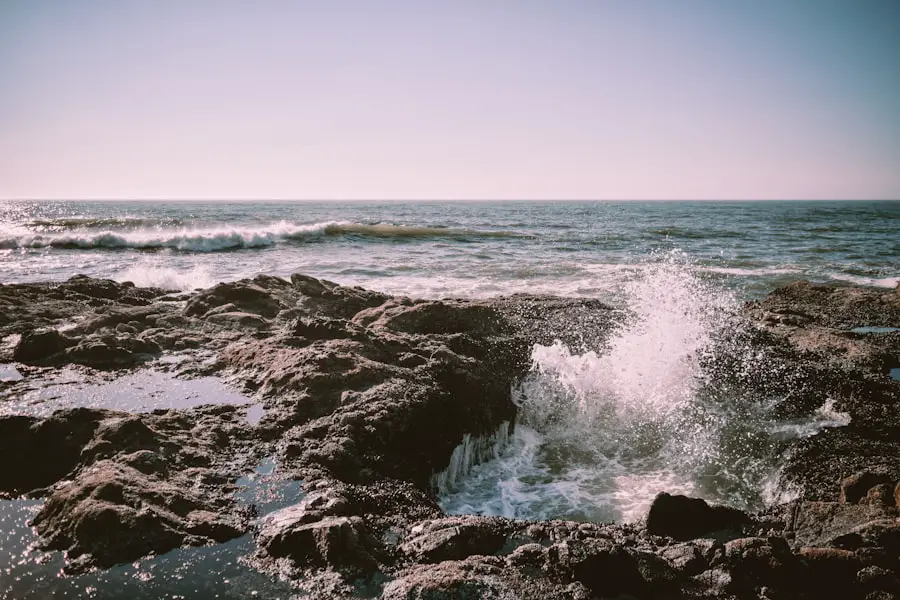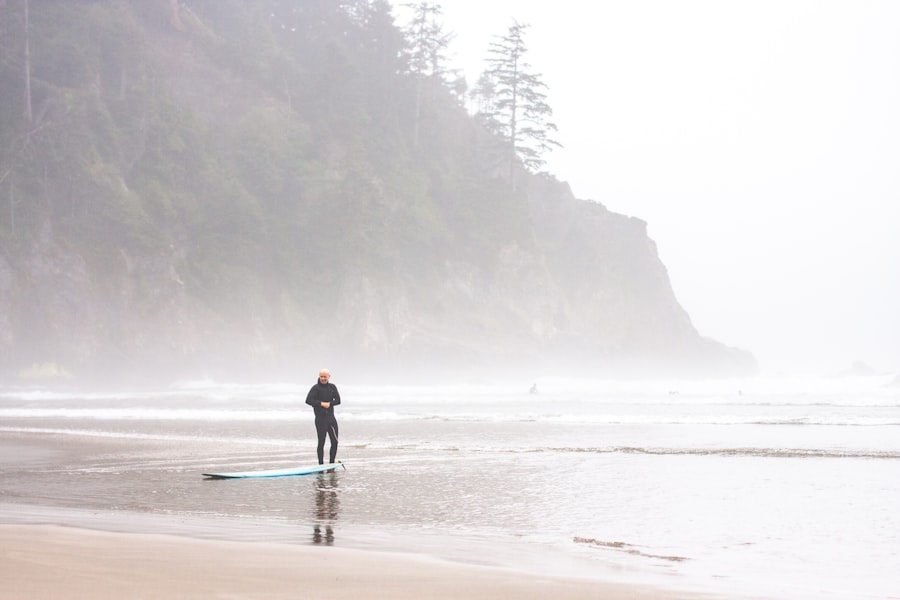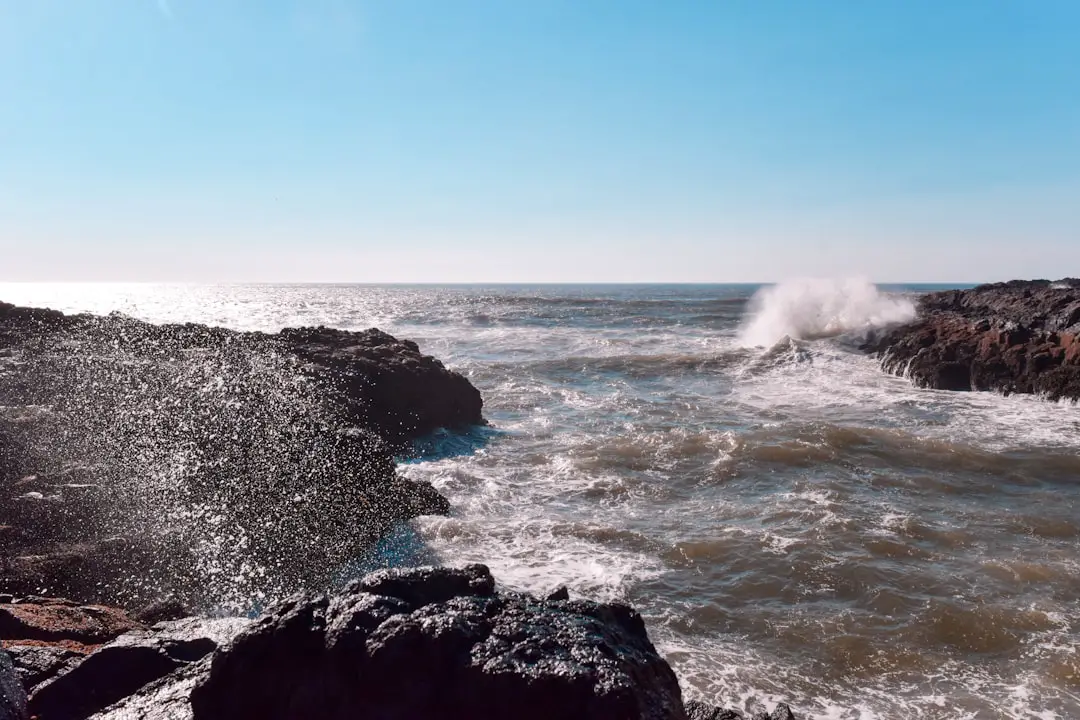Big Sur, a rugged stretch of California’s central coast, is renowned for its breathtaking vistas, dramatic cliffs, and the Pacific Ocean’s relentless waves. The climate in this region is classified as Mediterranean, characterized by mild, wet winters and warm, dry summers. The coastal location significantly influences the weather patterns, resulting in a unique microclimate that varies dramatically from the inland areas.
The proximity to the ocean moderates temperatures, ensuring that extremes are rare. Average summer temperatures hover around 70°F (21°C), while winter temperatures can dip to the low 40s°F (4°C) at night, making it a year-round destination for nature lovers. Rainfall in Big Sur is primarily concentrated in the winter months, with the wettest period typically occurring between November and March.
During this time, the region can receive substantial precipitation, leading to lush greenery and vibrant wildflower blooms in the spring. However, the rain can also cause landslides and road closures, which are important considerations for travelers. The summer months, conversely, are marked by dry conditions and abundant sunshine, making it an ideal time for outdoor activities.
Understanding these climatic nuances is essential for anyone planning a visit to Big Sur, as they can significantly impact the experience.
Key Takeaways
- Big Sur has a mild Mediterranean climate with cool, wet winters and dry, warm summers.
- The peak tourist season in Big Sur is during the summer months, from June to August, when the weather is warm and dry.
- The off-peak season in Big Sur is during the winter months, from December to February, when the weather is cooler and wetter.
- The best time for outdoor activities in Big Sur is during the spring and fall, when the weather is mild and the crowds are smaller.
- Big Sur experiences unique weather patterns, including coastal fog and occasional heavy rainfall, which can impact travel plans.
Peak Tourist Season in Big Sur
The peak tourist season in Big Sur generally spans from late spring through early fall, with July and August being the busiest months. During this time, visitors flock to the area to take advantage of the warm weather and long daylight hours. The allure of Big Sur’s stunning landscapes, including iconic sites like McWay Falls and Pfeiffer Beach, draws thousands of tourists each year.
Accommodations can fill up quickly during this period, and popular attractions may experience significant crowds. Travelers should be prepared for a bustling atmosphere, especially on weekends and holidays. In addition to the natural beauty, the peak season also coincides with various events and activities that enhance the visitor experience.
Art festivals, outdoor concerts, and guided tours are common during these months, providing opportunities for cultural immersion alongside the breathtaking scenery. However, while the vibrant energy of summer can be appealing, it is essential for visitors to plan ahead. Booking accommodations well in advance and arriving early at popular sites can help mitigate some of the challenges associated with peak season tourism.
Off-Peak Season in Big Sur

The off-peak season in Big Sur typically runs from late fall through early spring, with the months of November to March seeing a significant drop in visitor numbers. This period offers a different experience compared to the bustling summer months. The landscape transforms as winter rains nourish the flora, resulting in a lush and vibrant environment that is often less crowded.
For those seeking solitude and a more intimate connection with nature, visiting during the off-peak season can be particularly rewarding. While some attractions may have limited access due to weather conditions or maintenance during the off-peak months, many of Big Sur’s natural wonders remain accessible. The dramatic coastal views are often enhanced by stormy seas and moody skies, providing photographers with unique opportunities to capture the raw beauty of the landscape.
Additionally, winter is an excellent time for wildlife enthusiasts; migrating gray whales can often be spotted off the coast during this season. Travelers should be aware that while the off-peak season offers its own set of advantages, they should also prepare for cooler temperatures and potential rain. For more information on the off-peak season in Big Sur, you can visit the official website of the Big Sur California Tourism Bureau.
Best Time for Outdoor Activities in Big Sur
| Activity | Best Time |
|---|---|
| Hiking | Spring and Fall |
| Camping | Summer and Early Fall |
| Beach Activities | Summer |
| Wildlife Viewing | Year-round |
When it comes to outdoor activities in Big Sur, timing can significantly influence the experience. The best time for hiking and exploring the numerous trails in the area is typically from late spring through early fall when temperatures are mild and conditions are generally dry. Trails such as the famous McWay Falls Trail or the more challenging Ventana Wilderness routes offer stunning views and diverse ecosystems that are best enjoyed when weather conditions are favorable.
However, each season brings its own unique opportunities for outdoor enthusiasts. Spring is particularly enchanting as wildflowers bloom across the landscape, creating a colorful tapestry against the backdrop of rugged cliffs and ocean views. Birdwatching is also excellent during this time as migratory species return to the area.
In contrast, fall offers crisp air and fewer crowds, making it an ideal time for those who prefer a quieter experience while still enjoying pleasant weather for hiking and photography.
Big Sur’s Unique Weather Patterns
Big Sur’s weather patterns are influenced by its geographical features, including steep mountains that rise abruptly from the coastline. This topography creates microclimates that can lead to significant variations in weather over short distances. For instance, while it may be sunny along the coast, just a few miles inland can reveal cooler temperatures and foggy conditions due to elevation changes.
This phenomenon is particularly pronounced in summer when coastal fog rolls in during the evenings and mornings but often clears by midday. The interplay between ocean currents and local geography also contributes to Big Sur’s unique climate. The California Current brings cool waters along the coast, which helps moderate temperatures but can also lead to persistent fog during certain times of year.
This fog not only shapes the landscape but also plays a crucial role in supporting local ecosystems by providing moisture to plants and wildlife. Understanding these weather patterns is essential for visitors who wish to fully appreciate the dynamic environment of Big Sur.
Tips for Traveling to Big Sur During Different Seasons

Traveling to Big Sur requires careful planning based on seasonal conditions. During peak tourist season, it is advisable to book accommodations well in advance and consider visiting popular sites early in the day or later in the afternoon to avoid crowds. Additionally, travelers should be prepared for limited parking at popular trailheads and lookout points; carpooling or using public transportation when available can alleviate some of these challenges.
In contrast, those visiting during the off-peak season should come equipped for variable weather conditions. Layered clothing is essential as temperatures can fluctuate significantly throughout the day. Rain gear may also be necessary during winter months when precipitation is more likely.
It’s wise to check local forecasts before embarking on outdoor adventures and to remain flexible with plans in case of unexpected weather changes. Regardless of when one visits, having a well-thought-out itinerary that includes both popular attractions and lesser-known gems can enhance the overall experience.
Events and Festivals in Big Sur Throughout the Year
Big Sur hosts a variety of events and festivals throughout the year that celebrate its rich culture and natural beauty. One notable event is the Big Sur River Run held annually in April, which attracts runners from all over who come to enjoy a scenic race along the riverbanks amidst stunning landscapes. This event not only promotes fitness but also fosters community spirit among locals and visitors alike.
In addition to athletic events, Big Sur also celebrates its artistic heritage through various festivals such as the Big Sur International Short Film Screening Series held during summer months. This event showcases short films from around the world against the backdrop of Big Sur’s stunning scenery, creating a unique cultural experience that combines art with nature. Other seasonal events may include local farmers’ markets featuring fresh produce from nearby farms or art exhibitions highlighting local artists’ work inspired by the surrounding landscapes.
Planning Your Trip to Big Sur: Weather Considerations
When planning a trip to Big Sur, understanding weather considerations is paramount for ensuring an enjoyable experience. Travelers should research seasonal averages for temperature and precipitation to pack appropriately for their visit. For instance, those traveling in summer should prepare for warm days but also bring layers for cooler evenings when coastal fog rolls in.
Additionally, it’s crucial to stay informed about road conditions and potential closures due to weather-related issues such as landslides or maintenance work on Highway 1, which runs along the coast. Checking local resources or websites dedicated to travel advisories can provide up-to-date information that may affect travel plans. By taking these factors into account and being prepared for varying conditions, visitors can make the most of their time in this stunning coastal paradise while enjoying all that Big Sur has to offer throughout the year.
If you’re planning a trip to Big Sur, you may want to consider bringing along a portable water bottle to stay hydrated during your adventures. Check out this article on
